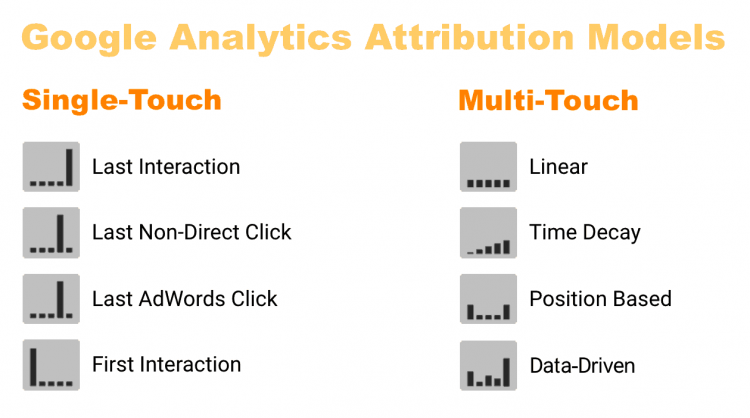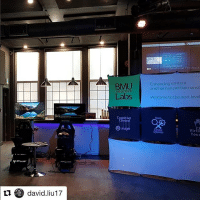Contributor
A Brand Analytics Toolkit for the Data-Driven CMO
Contributor
Over the last few years in particular, an array of interesting brand analytics solutions have emerged. In this article, we will share with you some of these solutions that can help CMOs measure performance from their brand equity campaigns more accurately.
Chris Goward of WiderFunnel, a highly-respected expert in marketing performance and conversion rate optimization (CRO), once said that your brand is your shortest path to conversion. No wonder marketers from Apple to McDonald’s are spending so much on brand equity campaigns each year.
The Brand Measurement Problem
For CMOs, the problem is that even if they know brand equity campaigns are necessary to maintain market share and growth, the challenge is in proving it. Unfortunately (or fortunately for some), in a digital media world where the click and view stream connects every ad dollar back to a return on ad spend, demonstrating the direct and measurable value of brand campaigns to your Board, especially your CFO, is no longer optional.
The classic approach to measuring value is through brand lift studies, which is typically done through focus groups and surveys. In the digital context, Nielsen, YouTube, Facebook and a host of other vendors have introduced a more sophisticated digital approach to brand lift studies. Users exposed to digital ad banners can be prompted later on to answer a one-question survey, which is compared to answers to the same question from a control group not exposed to the ad.
The above techniques certainly have merit. But couldn’t we take brand analytics a step further?
The answer is yes, we absolutely can. But to do so will require a combination of innovative approaches, methodologies and technologies.
The Rise of Persona Analytics
Nothing is more important than your client, right? But how much do you know about your client or potential new client? Which audience segments should you be focusing your advertising dollars on? Of course, client data from your CRM and web analytics is great. But why not merge that data and amplify it with third party sources in order to draw a more complete picture of your customer? With a data management platform (DMP) or even by simply connecting your website visits, CRM data or Facebook fan data with Facebook Audience Insights, you can learn so much more about your current and potential clients.
By tapping into the immense pool of anonymized 3rd party and social media data, you can understand what really makes your customers tick. You can understand where they hang out and what social content they engage with the most. Ultimately, you can start identifying what Affinio calls “tribes” of personas or subsegments.
These “tribes,” so to speak, are the real people behind the tons of device IDs and browser cookies you collect in your various media campaigns every day. Going beyond the device to understand the persona, you can come up with better strategies for your brand that will truly resonate and connect with the audience.

As such, brand marketers need to position their campaigns as prospecting initiatives to build remarketing assets for performance campaigns later on. By setting up a solid audience segmentation and targeting strategy for your brand campaigns, you can turn every meaningful ad interaction into an audience remarketing asset.
For example, say your company has an objective to reach more soccer moms for a new product line. Typically, you’d brief your agency by asking for contextually relevant media placement targeting that demo profile. However, with a persona analytics approach, you can go further by asking your agency to create the digital persona from 3rd party or social media data available in programmatic platforms. From there you can ask for the size of that persona segment (i.e., soccer moms) to determine your prospecting reach.
Once you set your campaign live, you can set remarketing tags to every engagement point with that persona segment, such as video views, social actions, landing page visits, ad widget interaction, ad chatbot, etc. This means you can now create a solid and qualified remarketing pool based on the persona your company is targeting. That audience pool can then be leveraged by the media performance team through remarketing ads, paid search, etc.
Using this segment-building approach in your brand campaigns also means you’re creating tangible marketing assets for the organization, namely a remarketing pool or advertising database. You’re no longer just counting clicks, likes and video views for your brand ads, you’re now growing a remarketing pool to be used by performance media in tandem.
Ultimately, this will all trickle down to the conversion rate as more qualified users enter the funnel. You WIN!
Unleashing the Power of Brand and Social Listening Platforms
Another important tool to use is a social listening platform. In a sense, this could be considered the new way of doing PR analytics for brands. The beauty is that once you set your queries to track public online conversations about your brand, the data can be measured on a daily basis. From this data, tremendous insights can be drawn about your brand and how it resonates with your audience and the general public. The learnings from things like sentiment analysis or conversation clouds can provide very powerful competitive advantages. You can draw even more value by also tracking conversations and sentiment around your competitors and their products.
The data from social listening platforms is critical to brand analytics:
CEOs who don’t understand social media and big data will become extinct within 10-15 years.
Tullio Siragusa, Will Data Science Forever Change Branding Strategies?, Data Science Central
In other words, if you don’t master this kind of data, your competition will, and eventually, they will crush you with it.
Keep in mind that for your analytics teams, it takes time to master the learning curve associated with social listening data. Developing relevant and sophisticated queries to draw the right insights from those platforms takes experience and skills. The longer you wait, the further behind the competition you will be.
Unfortunately, many companies and agencies invest a fortune in these (relatively expensive) platforms without a good analytics and data science team to use them. As a result, the tool ends up collecting dust, as is the case with so many other shiny tech tools. It’s like having a Ferrari when you’ve only got your learner’s permit.
As for those who learn to use these platforms adequately, they can start building more complex analytics frameworks for brands, such as graph networks to measure the size and impact of influencer networks for your brand or your competition.
For example, what if you’re a retailer and found out your top competitor’s brand on social media is within a short (say 50 links) distance of a popular influencer on Instagram. Wouldn’t you want to have your media planners or social media teams reach out to this influencer to explore possible advertising or content marketing integration opportunities?
For those who are familiar with Alex Pentland of MIT, who developed the discipline of Social Physics based on big data on social activities, you might be familiar with the notion of Idea Flow. The concept involves some mathematics and a lot of data. But used right, it can be applied to raw social listening data to identify the true movers of your brands or your competitor brands. Armed with this special weapon, your media and content marketing teams can begin to develop strategies to influence the influencers and generate a positive Idea Flow around your brand.
This is exactly the type of thing our analytics and data science team at Adviso tries to look for when supporting our media planners and content marketing teams.
By the way, if you’d like to learn more about the way data science can be used to draw value out of social media data, you should follow Mike Wu Ph.D, a former biophysicist turned data scientist, formerly with Lithium Social Analytics.
Reverse the Tide with First-Touch Attribution
Next on our list we tackle the natural born enemy of digital brand equity campaigns, namely the infamous last click attribution model.
As Einstein used to say, if you judge a goldfish by its ability to climb a tree, it will spend the rest of its life thinking it is useless.
In many respects, this is what most CMOs are coerced into doing with their brand marketing dollars. As a result, marketers usually end up shrinking their brand marketing dollars more and more each year. That’s very unfortunate.
On the other hand, other CMOs simply choose to ignore conversion attribution altogether when it comes to brand campaigns. They only look at soft metrics like new session clicks, completed video views (and thereby cost per completed view) or social actions. The disadvantage of this approach is never knowing if your cool high-impact ad formats ever ended up driving purchase consideration later down the funnel path. CMOs in this category tend to be old school and typically rely on the “spray and pray” approach to media campaigns when it comes to brand efforts.
There is a third approach that takes a middle path between applying linear last-click attribution to brand campaigns and simply spraying ads to everyone with no regard for the impact on conversions. The approach is simply to use a “First-Touch” attribution model to measure the performance of brand campaigns.
As we know, brand campaigns usually target new potential clients who’ve never had any interaction with the brand. If you use an ad server providing multi-touch attribution, you can isolate brand campaign reports and pull your first-touch conversions. First-touch conversions are essentially conversions based on the first ad a user was exposed to in a given conversion path.
To give you an illustration of this concept, take a look at the various attribution models you can select from Google Analytics below. In the case of brand campaigns, the idea is to select the single-touch “First Interaction” model to determine the conversion contributions of your advertising.

Naturally, some of you will argue that a single-touch “First Interaction” model gives too much weight to the first advertising touchpoint and leaves nothing for assisted conversions and last click. Well, first of all, no model is meant to be perfect. Furthermore, the “Last Interaction” model used by 99% of digital marketers has the same flaw. It assigns all the value to the last click. In a way, that’s like giving all the credit to the cashier for selling an item, but none to the sales team on the floor who are suggesting items to your customers.
The best approach is to use a true multi-touch attribution model, where attribution value is distributed across touchpoints according to a weighted value system. This approach works best if you have a specialized tool like C3 Metrics, Convertro or Google Attribution.
If you do not have access to this type of attribution platform or if you simply need a workable approach for the day-to-day measurement of campaigns, the single-touch approach is easier to manage and implement for reporting.
Essentially, it’s all about dividing your campaigns into two categories, “Brand” vs. “Performance” campaigns. For your “Performance” campaigns you apply a single-touch model in “Last Interaction” and for “Brand” campaigns you use “First Interaction” in your reports.
Then, for deeper quarterly or yearly analyses of your marketing efforts or when your organization has reached a greater level of marketing sophistication with analytics, you may apply the multi-touch model in your reporting system.
You can get started now with Google Analytics standard, by simply going to the Attribution section and pulling the first click report for any given brand campaigns. If you’re fortunate enough to have Google Analytics 360, you can integrate the DoubleClick Ad server (now called Google Ad Manager) into your analytics model.
The benefit of this approach is in gaining both the omnichannel view and the post-view attribution all in one swoop. As such, if a user saw your ad but didn’t click (which literally happens over 99% of the time), you can know whether the ad (within an attribution time window) influenced the user to visit your website and convert later through search or direct navigation.
Using the “First Touch” approach for brand campaigns is probably the best way to measure the true incremental value of brand equity campaigns. If you’d like to learn more about multi-touch attribution models, you should read these great articles from our Media Practice Leads: Putting an end to post-click attribution by Jean-Michel Dubé and Last click is dead, long live multi-touch attribution by Nicolas Villeneuve.
When Neuroscience Comes Into Ad Creative Analytics
In collaboration with neuromarketing firms, our R&D team has designed brand response experiments whereby we measure ad creative against certain attention and emotional keys.
The idea is to understand how people respond to your brand in the context of a particular ad and within a particular environment. For example, using a combination of neuroscience software and deep learning techniques, we can predict the strength of certain emotions stimulated by particular creative.
Say you’re trying to create an emotion of trustworthiness or warmth around your brand, is your ad creative helping you to achieve this end? Furthermore, is the emotion you’re trying to stimulate with the ad creative stronger in the environment of a news website or a movie website? How about attention? Does the creative draw enough attention? In which environments does our creative campaign stand out the most?
Without any data to use as a baseline before the campaign is launched, you’ll need to roll the dice to discover the answer.
Neuroscience marketing has a way of answering these questions and it doesn’t require a sophisticated MRI scan or an electroencephalogram (EEG). In fact, approach any firm saying they use EEG for neuromarketing with a certain level of circumspection. The reason is that the low signal-to-noise ratio inherent in EEGs and the high number of electrodes used in this technique make for poor measurement output.

But some companies do seem to get it right with the use of EEG, one such company at the moment is BMU Montreal (Beam Me Up). To explain why they’re doing EEG right would take up too much space in this blog. So if you’re curious to learn more, I suggest you give them a call and tell them I sent you 😉
In any event, outside of this more invasive and controversial EEG technique for neuromarketing, a very effective alternative is to use the Posner’s paradigm of attention in combination with deep learning techniques. In our experience, this approach has produced very meaningful insights into brand sentiment and ad creative attention potential. Combine the results with a survey, using the same focus group. Cross-referencing the neuroscience results with qualitative survey panel answers makes for much richer marketing learnings than using either method alone.
If you don’t have access to a neuromarketing firm, don’t panic. You can also go with the next best thing, which is to design A/B testing protocols for your ad copy and brand creative. By designing a test phase with different iterations of ad copy and creative combinations, you can find the most engaging creative and communications strategy to yield brand equity lift.
An example of this approach is the brand campaign we ran to launch a new format of cranberry and berry juices for Oasis. After two weeks of non stop A/B/n testing on a smaller scale, we launched the juice brand in full force and confidence, knowing our creative messaging was fully pre-optimized for brand engagement. The results speak for themselves.
In the end, the idea is to understand brand perception and what produces that special brand halo effect so coveted by the Apples and Cirque du Soleils of this world. By using a neuroscience marketing and/or A/B testing approach, you can bring scientific insights to creative optimization.
Time to Build Your Own Brand Analytics Stack
Combining neuroscience marketing studies for your brand with social listening tools, third party persona data from a DMP or DSP and tools like ComScore, you can get a much richer understanding of your clients and how they relate to your brand (and your competitors). All of this can be done now.
Why wait? If you need help to get started, our consulting team is more than happy to lend a hand.

-1.png)







